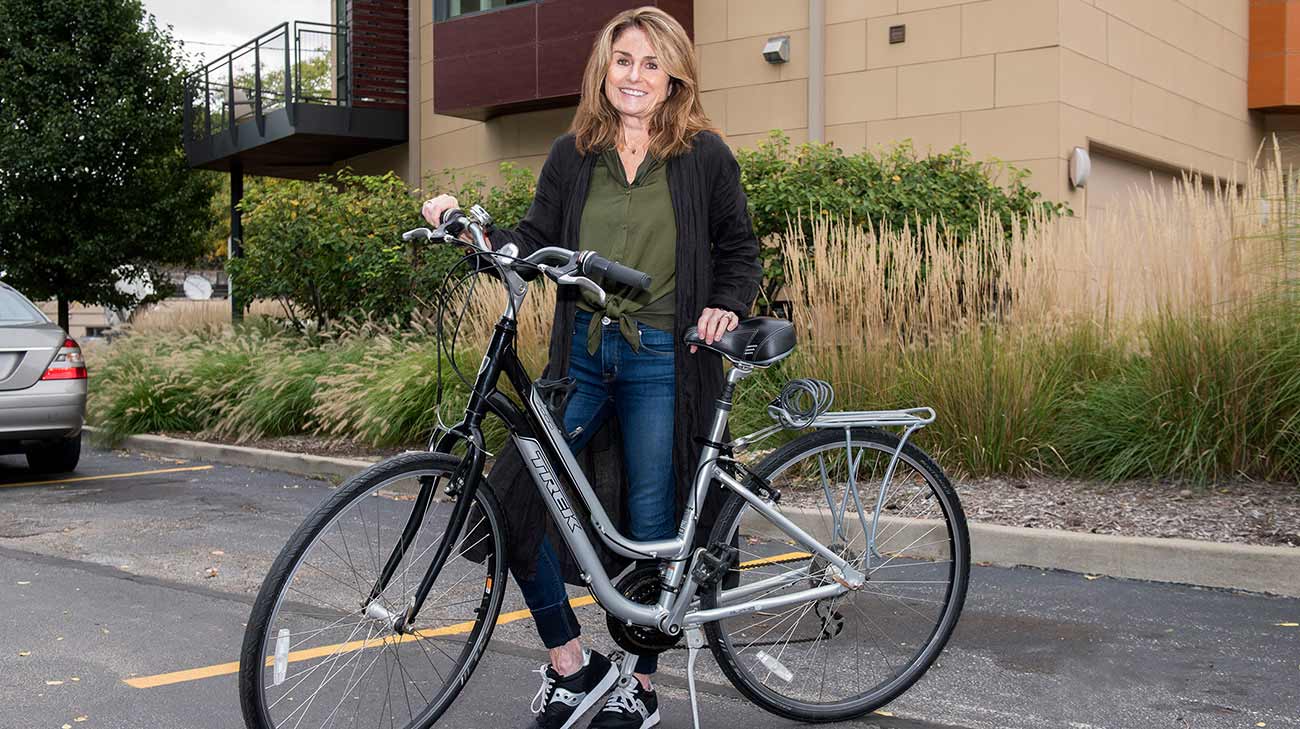
Stephanie Hearey was a regular at the pain management clinic. For more than a decade she had struggled with back pain. First, it was due to herniated discs, which she had repaired surgically. Then she developed spondylolisthesis (slipped vertebra) and scoliosis (curved spine), which further compressed her spinal cord and nerves.
“For three or four years, I had injections in my back every few months and eventually every six weeks,” says Stephanie, the working mom of seven adult children and stepchildren. “I tried physical therapy, acupuncture, everything.”
Back pain had changed her life. Once an avid athlete — running five times a week, playing tennis, biking and doing yoga — Stephanie would wake up at night with intense back pain and would plan her schedule around steroid injections. At one point, she writhed in bed for five days, unable to get to a doctor for help.
“There was rarely a time when I wasn’t in pain,” she says. “Even my relationships suffered because all we talked about was my bad back.”
Eventually, the steroid injections and other treatments became less effective. Family, friends and even a spine surgeon at another medical center recommended Stephanie talk to Michael Steinmetz, MD, Chairman of Cleveland Clinic’s Department of Neurosurgery, as well as the Center for Spine Health.
“As soon as I was free of the anesthesia and pain medication, I became very aware that my back pain was gone.”
“Stephanie had a complex back problem, which developed into a severe deformity with horrible symptoms,” says Dr. Steinmetz. “Typically it would take a large operation to open her back and insert rods and screws to correct and stabilize her spine. It would work, but it would cause a lot of trauma to her back muscles. It’s hard to say whether someone as fit and active as Stephanie could resume their normal lifestyle after a procedure like that.”
So Dr. Steinmetz offered Stephanie another option: having at least part of her major back surgery with minimally invasive techniques. The minimally invasive procedure through her side would correct the spinal deformity, then a conventional (but much smaller) procedure through her back would secure it, decompressing the nerves and relieving her pain.
In May 2017, Stephanie had the two-step procedure. Through a small hole in Stephanie’s side, Dr. Steinmetz inserted a tiny video camera and a slender tube, reaching the deformed area of Stephanie’s lower spine. Through the tube, he slid scaffolding into place, repositioning Stephanie’s misaligned vertebrae. Next, he made an incision in her back, through which he inserted two rods and a few screws to keep the vertebrae secured.
“As soon as I was free of the anesthesia and pain medication, I became very aware that my back pain was gone,” says Stephanie.
On Day 3 after surgery, she was able to stand and walk. She went home from the hospital on Day 5. Her surgical wounds healed quickly, and within two weeks she was walking around the block.
“We customized this procedure for Stephanie, to minimize the trauma to her back and allow her to get back to her active lifestyle,” says Dr. Steinmetz. “Thanks to the minimally invasive step, we were able to remove less bone, disturb less muscle and implant fewer rods and screws.”
Today, Stephanie is back to her old self — back to swimming, paddle boarding, kayaking and more.
“Last week I rode my bike for the first time in over three years,” she says. “I am so grateful to be able to function normally again and not even think about back pain.”
Related Institutes: Neurological Institute

